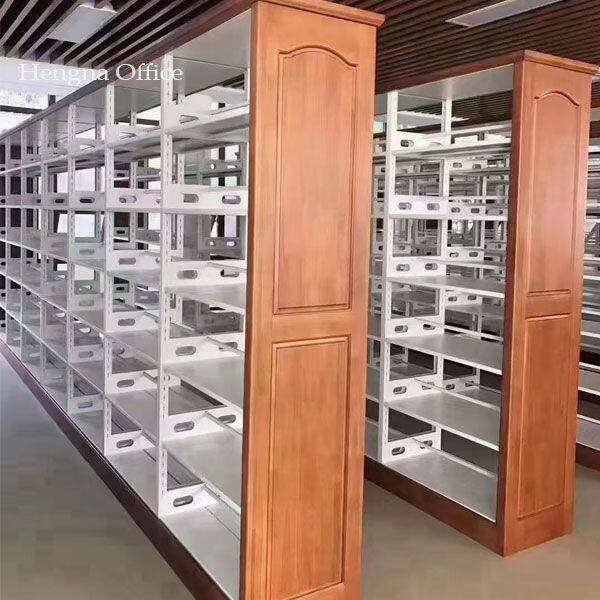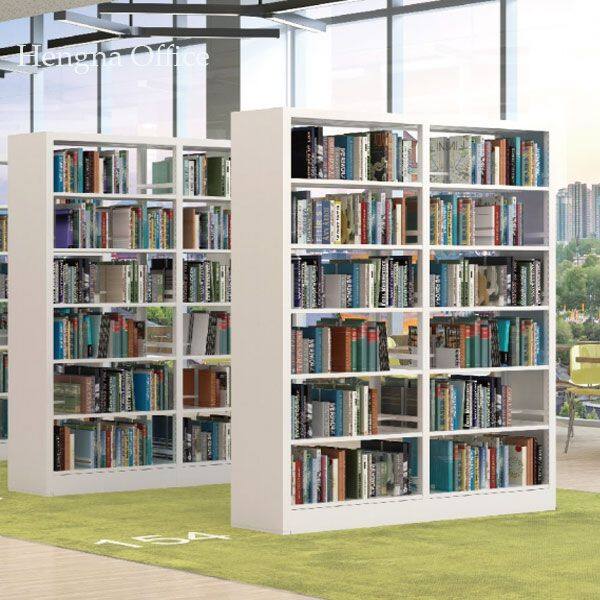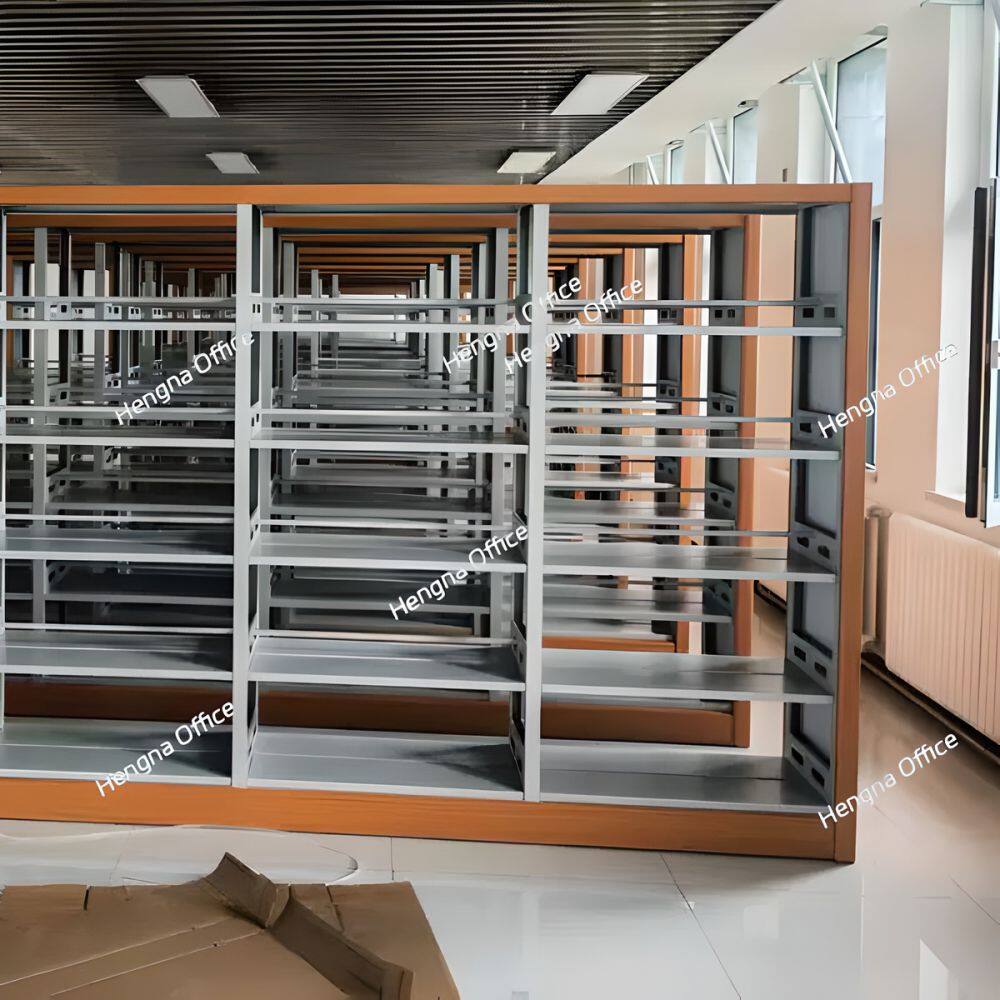-
 Sarah
Hi there! Welcome to my shop. Let me know if you have any questions.
Sarah
Hi there! Welcome to my shop. Let me know if you have any questions.
Your message has exceeded the limit.

Durable Steel Shelving Solutions for School Libraries and Classrooms
2025-11-05 08:29:40
Educational institutions require storage solutions that can withstand heavy use while supporting learning environments and maintaining safety standards. Steel shelving systems have become the preferred choice for schools and libraries, offering the durability, versatility, and longevity necessary for educational settings. This comprehensive guide explores how steel shelving can transform educational spaces while supporting curriculum delivery and student success.

Understanding Educational Storage Requirements
School environments present unique challenges for storage systems, including high traffic volumes, diverse user populations, and varying security needs. Library shelving must accommodate heavy book loads while remaining accessible to students of different ages and abilities. Classroom storage needs to support various teaching materials, supplies, and student projects while maintaining organized learning environments.
Steel shelving systems address these challenges through engineered designs that combine strength with accessibility. The material durability ensures longevity even under constant student use, while adjustable features accommodate changing educational needs and curriculum requirements. School administrators must consider factors such as weight capacity, safety features, and flexibility when selecting storage solutions for educational environments.
Weight Capacity and Library Applications
School libraries require shelving systems capable of supporting substantial book loads while maintaining accessibility and safety. Steel shelving offers impressive weight capacities, typically ranging from 150 to 500 pounds per shelf, making it ideal for heavy reference books, textbooks, and multimedia collections. This capacity allows libraries to maximize storage density while maintaining structural integrity.
Different library sections require specialized shelving configurations based on content type and usage patterns. Reference sections may need reinforced shelving for heavy dictionaries and encyclopedias. Children’s areas benefit from lower shelf heights and rounded corners for safety. Multimedia collections require specialized configurations for DVDs, computers, and audiovisual equipment. Steel shelving systems can be customized to meet these diverse requirements while maintaining consistent appearance throughout the library.
Classroom Storage and Organization Solutions
Classroom storage needs vary significantly based on grade level, subject area, and teaching style. Steel shelving systems provide versatile solutions for organizing textbooks, supplementary materials, teaching supplies, and student projects. Adjustable shelf heights accommodate different item sizes and can be modified as curriculum needs change throughout the school year.
Subject-specific storage requirements include science classrooms needing chemical-resistant shelving for lab equipment, art rooms requiring storage for various media and supplies, and computer labs needing specialized configurations for technology equipment. Steel shelving systems can be customized with features such as lockable doors, pull-out drawers, and specialized compartments to meet these diverse educational needs.
Safety Features and Educational Standards
Student safety represents paramount importance in educational environments, and storage systems must meet stringent safety standards. Steel shelving systems designed for schools incorporate safety features including rounded corners, anti-tip mechanisms, and secure anchoring systems. These features prevent accidents and ensure safe operation even in high-traffic areas.
Compliance with educational safety standards includes meeting requirements for fire safety, earthquake resistance, and accessibility. Steel shelving systems typically feature fire-resistant materials and construction that help protect educational materials. Some manufacturers offer seismic-rated configurations for schools in earthquake-prone regions. ADA compliance ensures accessibility for students with disabilities, promoting inclusive learning environments.
Flexibility and Adaptability for Changing Needs
Educational needs evolve constantly due to curriculum changes, technology integration, and shifting student populations. Steel shelving systems provide the flexibility needed to adapt to these changing requirements. Modular designs allow for easy reconfiguration as space needs change or new programs are implemented. Adjustable shelves accommodate different material sizes and types.
The ability to reconfigure shelving without complete replacement provides cost-effective solutions for growing schools. Mobile steel shelving units with casters offer additional flexibility for dynamic classroom layouts or library reorganization. Some systems incorporate interchangeable components that can be added or removed as storage needs change, ensuring long-term utility and value.
Technology Integration and Modern Learning
Modern educational environments increasingly incorporate technology that must be accommodated within storage systems. Steel shelving systems can be customized with integrated power outlets, cable management, and device charging stations. These features support technology-rich learning environments while maintaining organized, safe storage for electronic devices.
Library steel shelving can incorporate features such as integrated computer workstations, multimedia display areas, and digital resource access points. Classroom shelving may include specialized compartments for tablets, laptops, or other student devices. This technological integration ensures that storage systems support rather than hinder modern educational practices and technology integration initiatives.

Durability and Long-Term Value
Educational institutions operate under tight budget constraints and must maximize the value of every investment. Steel shelving systems offer exceptional durability and longevity, typically lasting 20-30 years even under heavy school use. This extended lifespan reduces replacement frequency and provides excellent long-term value for budget-conscious schools.
The resistance to damage from student use, moving furniture, or accidental impacts ensures consistent appearance and functionality throughout the product lifecycle. Steel shelving systems require minimal maintenance beyond routine cleaning, reducing ongoing operational costs. The ability to withstand environmental factors such as humidity, temperature changes, and cleaning chemicals further enhances longevity and value.
Installation and Space Planning
Proper installation of steel shelving systems in educational environments requires careful planning and coordination with school schedules. Professional installation ensures proper assembly, secure anchoring, and compliance with safety standards. Installation timing must minimize disruption to educational activities, often requiring work during evenings, weekends, or school breaks.
Space planning considerations include traffic flow patterns, sight lines for teacher supervision, and accessibility requirements. Library layouts must support various usage patterns including individual study, group work, and class visits. Classroom configurations should facilitate teaching methods and student interaction while maintaining organized storage. Professional space planning ensures optimal utilization of available educational space.
Cost Analysis and Budget Considerations
Educational facility investments must demonstrate strong value and long-term benefits. Steel shelving systems typically deliver 20-30 year lifespans, providing excellent return on investment compared to alternative materials with shorter lifespans. The reduced replacement frequency and minimal maintenance requirements lower total cost of ownership over the system lifecycle.
Budget planning should consider both initial acquisition costs and long-term value. While steel shelving may require higher initial investment, the extended lifespan and durability provide superior long-term value. Many manufacturers offer educational discounts or bulk purchasing programs that help schools manage costs while obtaining quality storage solutions. Grant opportunities and educational funding programs may also be available for shelving investments.
Future Trends in Educational Storage
The evolution of educational practices continues to influence storage solution development. Smart steel shelving systems with integrated inventory tracking, digital resource access, and automated organization tools are emerging to support modern educational efficiency. Flexible learning environments require storage solutions that can adapt to various teaching methods and student needs.
Sustainability considerations are increasingly influencing educational furniture decisions, with manufacturers incorporating recycled materials and environmentally friendly production processes. Collaborative learning spaces require versatile storage that supports group work and project-based learning. These innovations ensure that steel shelving will continue to meet evolving educational needs while adapting to changing teaching methods and technologies.
 Steel shelving systems represent essential investments for educational institutions seeking to create organized, safe, and functional learning environments. The combination of durability, flexibility, and safety features makes steel shelving the ideal choice for diverse educational applications. By understanding educational requirements, safety standards, and installation considerations, schools can create storage solutions that enhance learning, support curriculum delivery, and provide long-term value. As educational environments continue to evolve, steel shelving systems will remain fundamental to effective organization and educational success.
Steel shelving systems represent essential investments for educational institutions seeking to create organized, safe, and functional learning environments. The combination of durability, flexibility, and safety features makes steel shelving the ideal choice for diverse educational applications. By understanding educational requirements, safety standards, and installation considerations, schools can create storage solutions that enhance learning, support curriculum delivery, and provide long-term value. As educational environments continue to evolve, steel shelving systems will remain fundamental to effective organization and educational success.
Tags: Durable Steel Shelving Solutions, School Libraries and Classrooms, Steel Shelving

